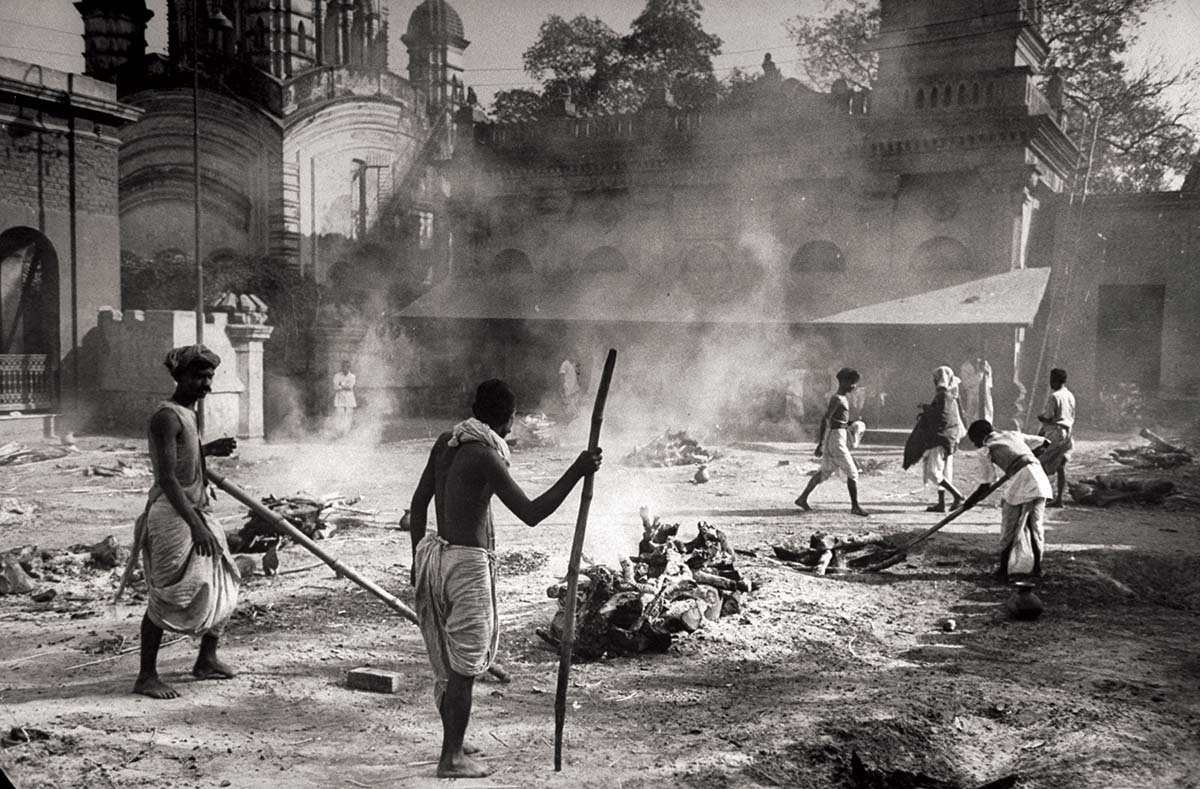The Bengal Famine of 1943: Starvation and Suffering in British India
History Indian HistoryPosted by NewAdmin on 2025-02-03 09:25:47 |
Share: Facebook | Twitter | Whatsapp | Linkedin Visits: 10

The Bengal Famine of 1943
In October 1943, a scientist traveling along the Brahmaputra river in Bengal witnessed the devastating aftermath of a famine that had ravaged the region. Bodies of dead and dying people lined the banks, a grim sight far removed from the ongoing conflict of World War II. The Bengal Famine, which started in the summer of 1943, claimed two to three million lives by the time it ended, due to a deadly combination of starvation and disease.
The Causes of the Famine
The famine’s origins are complex, involving both natural and man-made factors. The British colonial government’s wartime policies, particularly the export of rice from Bengal to support the war effort, exacerbated the food crisis. Additionally, the disruption of local markets, inflation, and the lack of government relief worsened the situation. The region also suffered from crop failures due to flooding, but the impact of British policies was the primary driver of the widespread hunger.
The Role of the British Government
The British response to the famine has been a subject of intense debate. The colonial government, under Winston Churchill, failed to intervene effectively, and many critics argue that the famine was a result of British neglect and indifference. Some scholars suggest that the British Empire’s focus on the war effort, rather than the welfare of its colonial subjects, contributed to the scale of the catastrophe. Relief efforts were delayed, and when aid finally arrived, it was too little, too late.
Legacy of the Famine
The Bengal Famine of 1943 remains one of the darkest chapters in the history of British India. It not only devastated the population but also deepened the growing discontent and resentment toward British rule. The famine is often seen as a pivotal moment in India’s struggle for independence, highlighting the profound consequences of colonial governance and exploitation.
Search
Categories
- Sports
- Business
- History
- Politics
- International
- Science & Technology
- Social Issues
- Disaster Management
- Current Affairs
- Education
- Startup Business
- Startup News
- Awards
- Community Services
- Fundraising Events
- Volunteer Services
- Health Initiatives
- Innovations and Initiatives
- In News
- dummybanners
- Awards
- Partners
- Products
- Press Releases
- News
- Fast Check
- South
- సినిమా
- Gallery
- Sunday Chronicle
- Hyderabad Chronicle
- లైఫ్ స్టైల్
- National
- క్రైం
- ట్రెండింగ్
- జాబ్స్
- అంతర్జాతీయo
- బిజినెస్
- రాజకీయం
- బిజినెస్
- సంపాదకీయం
- నవ్య
- చిత్ర జ్యోతి
- క్రీడలు
- జాతీయం
- తెలంగాణ
- తాజా వార్తలు
- మన పార్టీ
- మన నాయకత్వం
- మన విజయాలు
- డౌన్లోడ్స్
- మీడియా వనరులు
- కార్యకర్తలు
- North East Skill Center News
- Government Schemes
- Entrepreneurship Support
- Employment Opportunities
- Skill Training Programs
- Departments
- Investments
- Initiatives
- Resources
- Telangana IT Parks
- Events & Jobs
- Press Releases
- News
- Airport News
- Newtons Laws of Motion
- Karbonn in Business
- Investments in Karbonn
- Company quarterly sales
- Markets
- Auto News
- Industry
- Money
- Advertisements
- Stock target
- Company Updates
- Stock Market
- Company Sales
- Staffing and HR
- Constituency Assembly
- General News
- Srikalahasti Temple
- Bojjala Sudhir Reddy
- Technology & Innovation
- Sports
- Business
- Products
- Industries
- Services & Trainings
- Tools & Resources
- Technology Integration
- Drug Seizures & Arrests
- Telangana Narcotics
- Law & Enforcement
- Rehabilitation
- Nationwide Drug Policing
- Nigeria Seizures
- Global Operations
- Drug Awareness
- Drug Enforcement Tech
- NCB Drug Seizures
- Judicial Crackdown
- India's Surveillance Tools
- Cross-Border Links
- Women Safety
- Cyber Crimes
- Drug Abuse
- Traffic & Road Safety
- Community Connect
- Public Safety Alerts
- Citizen Assistance
- Nellore City News
- Politics & Administration
- Events & Festivals
- Agriculture & Rural
- Business & Economy
- Health & Wellness
Recent News
- Cyber Vigilante Exposes Alleged Tech Scam, Captures Scammer's Reaction on Webcam
- Denmark to Tax Books Zero Percent to Tackle 'Reading Crisis'
- 'Uncertainty in external demand remains major drag on growth': Malhotra
- Ex-Palestinian Basketball Player Mohammed Shaalan Killed By Israeli Strike
- Vice-President Dhankhar Feared for Speaking Truth to Power
- Floods Claim Hundreds of Pakistani Lives
- MSME meltdown looming as global uncertainty persists
- The Surprise 100m Champions